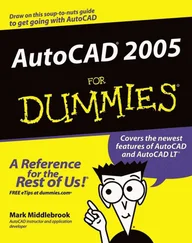Description: Traditionalist political scientists were descriptive in nature. They described structures and their features in detail instead of trying to explain.For example, when looking at a legislature, such as the U.S. Congress, political scientists described its structures and functions. They discussed in detail the powers given to Congress by the constitution, the way Congress passed bills, and how many committees both Houses of Congress had. In addition, they described electoral laws for countries and how people could run for office. When looking at the U.S. Constitution, political scientists would detail the powers given to all three branches of governments and the relationship between the federal government and states. There was no analysis of how Congress actually worked and how and why members of Congress voted on certain bills.
Formal legalism: Formal legalism refers to traditionalists studying formal structures such as political institutions, examples being legislatures and executives, and focusing on written documents such as constitutions. Traditionalists excluded studying human beings working in these institutions on purpose. In other words, they needed to discuss the structures but ignored the people working in these structures.
Normative theory: Normative theory is an explanation of events and people’s behavior, which includes a researcher’s personal preferences. Instead of being neutral, under this theory, it’s perfectly acceptable to include values, personal preferences, and personal beliefs into research. After creating a normative theory, it isn’t necessary to test it. A great example of traditional research and normative theory comes from American politics. It’s called the Classical Democratic Theory of Voting Behavior and was widely accepted until the1940s. It goes as follows:In a democracy, voters are rational voters.Voters know about issues and candidates’ stances on issues and are able to base their votes on issues and candidate preferences.Voters cast a vote based on knowledge.This is considered a rational vote.Because democracies create these rational voters and the U.S. is a democracy, rational voters exist in the U.S.
Conservativism and the status quo: Political scientists who identified as traditionalists wrote in support of their governments or political regimes. For traditionalists, it was unacceptable to criticize their current government. They did research to support the current regime. Do keep in mind that many political scientists of the time conducted their work in authoritarian regimes (see Chapter 4) and couldn’t, even if they wanted to, publicly criticize their government. Imperial Germany (1871–1918) is a good example of this.
Eurocentrism: Most traditionalists were Eurocentric. All that means is that they focused their work on Europe. And for research purposes, this included the U.S., which was considered European because it was populated by Europeans. The rest of world was colonized and didn’t matter much to political scientists. This didn’t change until the end of World War II, which resulted in the decolonization of most of the world, especially Africa and Asia.
Begin parochial: Most traditionalists believed that the European races were superior to other races found especially in Africa. Political scientists and historians in France, for example, focused on the moral obligation to spread the superior French culture to its African colonies to educate and improve local culture. The inequality of races was one of the most controversial aspects of traditionalism and disappeared from political science research after World War II.
Traditionalism dominated political science for almost a century but started to decline in the 1940s. More and more political scientists felt uncomfortable with its Eurocentric and conservative orientations. Most important, political scientists conducted new empirical studies, which undermined traditionalist theories.
Switching to Behavioralism
Behavioralism is the study of human beings and their behavior. Behavioralism was a direct response to the failures of traditionalism and was an attempt to turn political science and the social sciences overall into real scientific disciplines. For decades, people looked down on the social sciences because they weren’t considered real or hard sciences like biology, chemistry, and physics. The reason was that political scientists didn’t test theories, brought their own values into their research, and couldn’t create universal theories.
 A universal theory is a general explanation of behavior and events that has to be able to explain over time (ahistorical) and its explanations have to hold true everywhere. Universal theories are the backbone of the natural sciences and consist of universal laws. A universal law is a relationship that holds true everywhere and also over time. For example, x has to cause y everywhere and over time.
A universal theory is a general explanation of behavior and events that has to be able to explain over time (ahistorical) and its explanations have to hold true everywhere. Universal theories are the backbone of the natural sciences and consist of universal laws. A universal law is a relationship that holds true everywhere and also over time. For example, x has to cause y everywhere and over time.
The concept of a paradigm was developed in 1962 by Thomas Kuhn in his book The Structure of Scientific Revolutions (University of Chicago Press) . A paradigm is a scientific worldview (ideology) that shapes and guides a researcher in political science. The paradigm tells the political scientist what to research, how to research the specific problem, and what type of conclusions the researcher can draw. In other words, it sets the parameters for research. Paradigms can help with research but are also very restrictive. For example, traditionalism is a paradigm. It tells the political scientist what to study, in this case, institutions and constitutions, how to study the two, by describing them, and what type of conclusions to draw. To study actual human behavior would be outside of the paradigm and wouldn’t be acceptable to the rest of academia. The researcher would be shunned by his colleagues and his research wouldn’t be published. The researcher’s career would be over.
To gain respect from the other real sciences, political science started to attempt to turn itself into a hard science beginning in the 1950s. Suddenly, political scientists tested theories and attempted to create grand theories, necessary to qualify as a natural science.
By 1954, behavioralism successfully replaced traditionalism as the dominant paradigm (see nearby sidebar) in political science. It brought about the following changes to political science research.
Traditionalism made a point to describe only institutions and constitutions. It didn’t analyze the people running these institutions or try to explain their behavior. Behavioralism changed this. Now, political scientists begin to study human behavior and actually explain and analyze the inner working of institutions and constitutions. For example, instead of just describing Congress, the researcher now focuses on members of Congress and why and how they vote a certain way. Instead of describing the great battles of World War II, the political scientist now tries to explain why war broke out and how decisions were made during the war. In a nutshell, explanation replaced description in political science research. Today only a few traditionalist political scientists remain, mostly in Europe.
Emphasizing human behavior
Instead of focusing on institutions and constitutions as traditionalism did, behavioralism focuses on actual human beings and how they act. Instead of just describing human behavior, researchers now want to explain human behavior. Why do people engage in certain acts? How do they act when they suddenly find themselves in positions of power? Why do members of Congress vote in a certain way? Why do people go to war? All of these are questions political scientists now ask. Behavioralists therefore try to explain human behavior.
Читать дальше

 A universal theory is a general explanation of behavior and events that has to be able to explain over time (ahistorical) and its explanations have to hold true everywhere. Universal theories are the backbone of the natural sciences and consist of universal laws. A universal law is a relationship that holds true everywhere and also over time. For example, x has to cause y everywhere and over time.
A universal theory is a general explanation of behavior and events that has to be able to explain over time (ahistorical) and its explanations have to hold true everywhere. Universal theories are the backbone of the natural sciences and consist of universal laws. A universal law is a relationship that holds true everywhere and also over time. For example, x has to cause y everywhere and over time.










